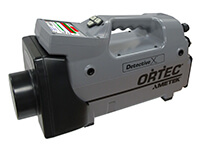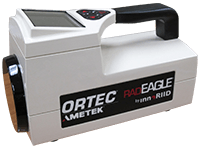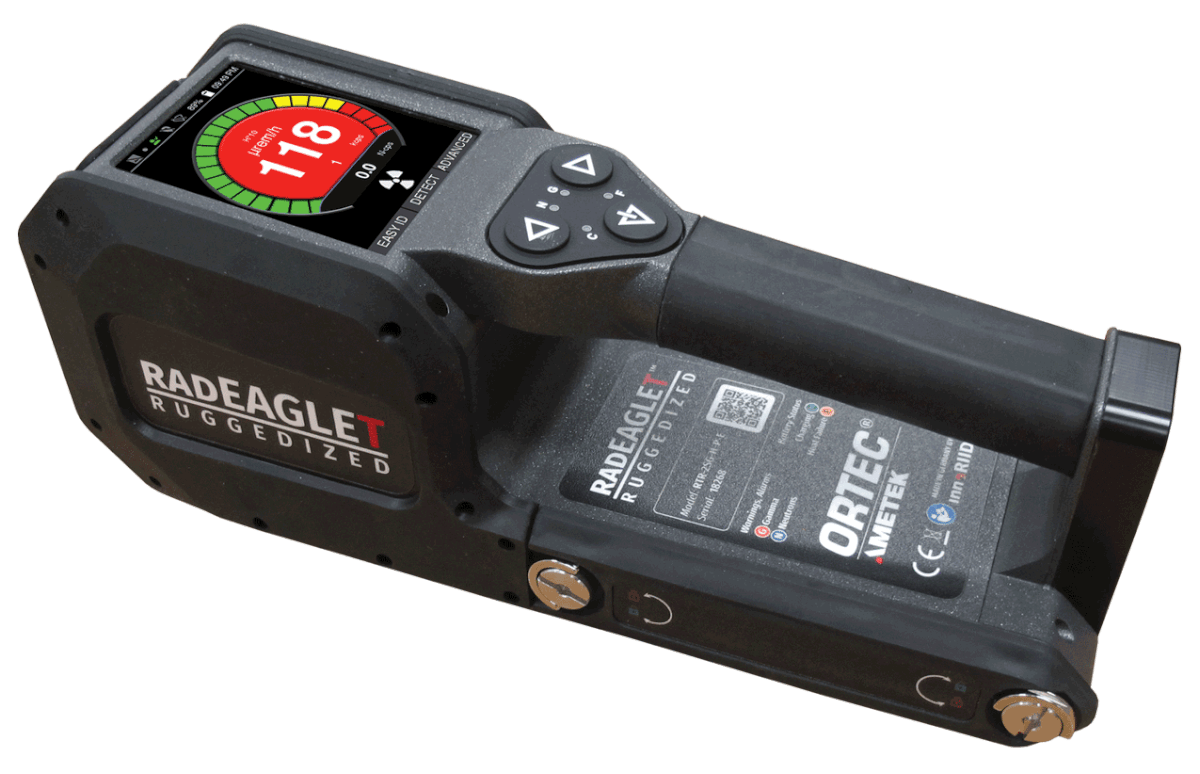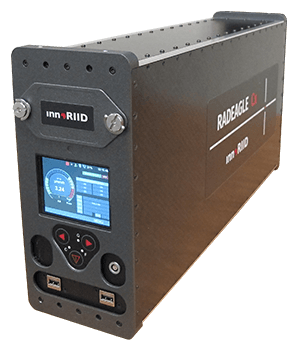
Detective X
Ultra High Resolution HPGe Radioisotope Identification Device
Detection and Identification Features
- Larger HPGe crystal, three times more efficient than the Micro-Detective-HX.
- Improved Algorithm that increases detection probability.
- Comprehensive library of over 175 radionuclides including new radiopharmaceuticals.
- Better standoff detection and ID capability.
Operational Improvements
- Rugged Instrument designed for harsh environments (IP65 compliant).
- Weight Significantly Reduced (about half of Detective-EX-100T).
- Battery life doubled and batteries are hot swappable.
- New Li6/ZnS Neutron Detector Module (NDM), no 3He required.
- Bigger display screen, easily readable in sunlight.
Quality Improvements
- New Stirling cooler with more cooling capacity and improved mean time between failures.
- Designed with extremely hard polycarbonate case, making it both lighter and more rugged.
Enhanced Connectivity Options
- System includes built-in Ethernet connection (RJ45).
- USB Connection to PC is plug and play.
- USB memory stick stores >100,000 spectra.
- Mobile phone Interconnectivity and control of instrument for iOS, Android, and Windows platforms.
- WiFi and Bluetooth are standard with Detective X.

RADEAGLE
State-of-the-Art Hand-Held, Radioisotope Identification Device
- Combining a large, high sensitivity crystal with an intelligent algorithm, the RADEAGLE can quickly, accurately, and simultaneously detect and identify four or more isotopes, typically in under 30 seconds.
- ANSI 42.34 compliant, the RADEAGLE offers a user-friendly interface that is intuitive, simple to navigate, provides visually clarity, and utilizes an extensive array of alarms.
- Supports a variety of scintillation crystals including NaI(Tl), and LaBr3(Ce) to optimize performance across multiple applications.
- Incorporating decades of industry expertise in detection and identification algorithms along with advanced hardware, electrical, and software systems, the RADEAGLE is the hand-held RIID of choice.

RADEAGLET-R
Rugged, Lightweight, Handheld Radioisotope Identification Device
ORTEC’s RADEAGLET-R™ lightweight, handheld radiation detector provides the speed and reliability to identify potentially hazardous radiation sources quickly and accurately. Designed and built to meet the specialized requirements of military, law enforcement, first responder, border patrol, and homeland security users, the RADEAGLET-R handheld RIID radiation detector stands up to rugged use under harsh conditions, delivering readings in seconds via a user-friendly, hi-resolution display. Built-in Bluetooth, LAN, Wi-Fi, and USB compatibility lets field personnel easily upload data via smartphone, tablet, or PC for reach back/triage analysis of potential threats.

RADEAGLE-Cx
Highly Sensitive, Adaptable Detection Units for a Variety of Radiation Detection and Identification Applications
Key Features and Benefits
- Three sizes, each available with and without neutron detectors allow tailoring to specific applications and budgets
- Color display and 3-button interface allows fail-safe means of user communication should external devices become unavailable
- Multiple RECx modules can be interconnected and accessed via the web interface enabling the user to easily set-up and control highly sensitive detection systems for either permanent or temporary applications (such as choke-point monitors)
- Proprietary method for addressing background radiation permits seamless transition from stationary to mobile operation without the need to change modes
- Unrivaled ID algorithms provide similar performance to RadEAGLE and RadEAGLET-R, but with much greater sensitivity
- REST, MQTT, MFK, and SIGMA APIs provide multiple means of data sharing
- Industrial Internet of Things (IIoT) ready for simple integration into customer’s infrastructure
- Intuitive RADsync Apple and Android apps along with a web-based interface facilitate ease of use
- GPS “breadcrumb” mapping to record and review routes and locations of radiation alarms/IDs
